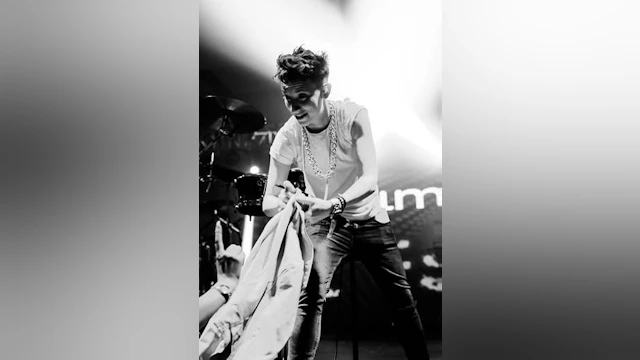Photo courtesy of Molly Adams
Jun. 5, 2020 - I identify as an LGBTQ masculine presenting female and am engaged to a feminine cis-woman who also identifies as LGBTQ. My fiancée, Genie, is very supportive when it comes to my mental health. In addition to the support of my queer community and non-LGBTQ friends, I feel incredibly lucky to be accepted and embraced for who I am by my mother. This is often not the case for those who identify outside of societal heteronormativity.
Getting unconditional love and understanding, and having access to healthcare, therapy, medication and support systems is not always a guarantee for those in the LGBTQ community. I was a loner in my younger years, never completely fitting in, wearing my brother’s hand-me-downs and wanting to play with the boys. I conformed to what I thought a teenage girl was supposed to look and behave like. I was 19 years old when I truly became my authentic self.
As an LGBTQ adult with ADHD, panic and anxiety disorder, I have traveled through my life and found the things that work for me.
In summer of 2017, I was living in Brooklyn, New York. My friend and I were preparing for Brooklyn Pride, and I was co-producing and hosting the afterparty. Out on the balcony, relaxing on patio chairs, we discussed our excitement for the night. When it was time to go in and shower, we found that the patio door was jammed shut. We were trapped, four floors up, with nowhere to go. I then experienced my first panic attack. I felt my chest tighten. Waves of anxiety, sweat, and extreme heat overwhelmed me. I thought I might throw up, panic, or do something irrational. As my anxiety worsened, I became concerned that my friend might be panicking, too. I obsessed over what they were thinking or planning to do. My feelings became intolerable.
Eventually, some neighbors saw us, called the police, and we were rescued from the balcony. However, the trauma I’d experienced stayed with me. I would feel it creeping back up whenever things felt out of my control: on subways, elevators, traffic, and social gatherings.
A year after my first panic attack, on a flight from L.A. to New York, I experienced it again: my chest tightened, my thoughts raced, sweat poured out of me, and I feared becoming hysterical. I realized it was a sense of claustrophobia and a lack of control that triggered me: the feeling that I could not leave or be alone if I needed or wanted to. I texted my mom to calm me down, and she suggested I come up with a plan to find professional assistance.
I went online, found a psychiatrist, and made a same-day appointment, heading straight there from JFK. The doctor was exceptional, and spoke with me for over three hours, which I know is not the norm. I was eventually diagnosed, and she started me on medication while seeing me regularly.
After a difficult adjustment to medication, it suddenly felt like the clouds had lifted. I finally had some relief after years of depression, anxiety, compulsive behavior, and attention issues. I remained on the same medication, adjusting the dosage as necessary, and always carrying one immediate relief dose for emergencies.
Recently, I had been working with the Boston Pride Committee on their June 2020 50th Anniversary celebration. When large gatherings were cancelled due to the Coronavirus pandemic, I knew it was the safe and responsible choice, but I was devastated that our annual tradition wasn’t going to happen.
My flare-ups worsened as I dealt with the challenges so many of us are experiencing during this uncertain time. For my own mental health, I temporarily deleted my social apps, stopped watching the news, and asked my family to share only information they felt was pertinent until I felt more stable. I called my psychiatrist and asked to check in twice weekly. I found that creating lists and daily routines made me feel safer. I pulled out my notebook, and wrote down ten initiatives:
- Remind myself daily how grateful I am for all I have
- Focus on tasks in my life that I can control
- Limit time on social, consult the CDC and trusted friends on best practices
- Distract myself with things that will benefit me: reading, improving skills, yard work, mediation, etc.
- Check in on friends and family
- Plan for when this crisis subsides: what can I do to positively impact myself and others?
- Spend time with my dogs
- Repeat my mantra when overwhelmed: “I am not able to control what will or will not happen, but I am doing what I can to care for myself.”
- Journal: express fears, feelings, and thoughts
- Take moments to honor the past, those who are sick or grieving, and all the people who are financially, emotionally, and otherwise negatively affected by the pandemic
My circle of queers and allies' words have been comforting during this time. Our conversations concluded that COVID19 would give us time to make Pride better than ever in 2021, and that being with friends and loved ones, at safe social distances or alone, would bring us closer together.
It can be difficult managing my mental health day-to-day, but I have come to accept that this is just who I am. In many ways, my unique experience sets me apart from others. I have decided to see the obstacles I face as opportunities to create new paths, be more observant, and to grow into a thoughtful person with a unique perspective. Being a queer person adds to my diversity. It is part of my character, and I take great pride in every part of my identity.
